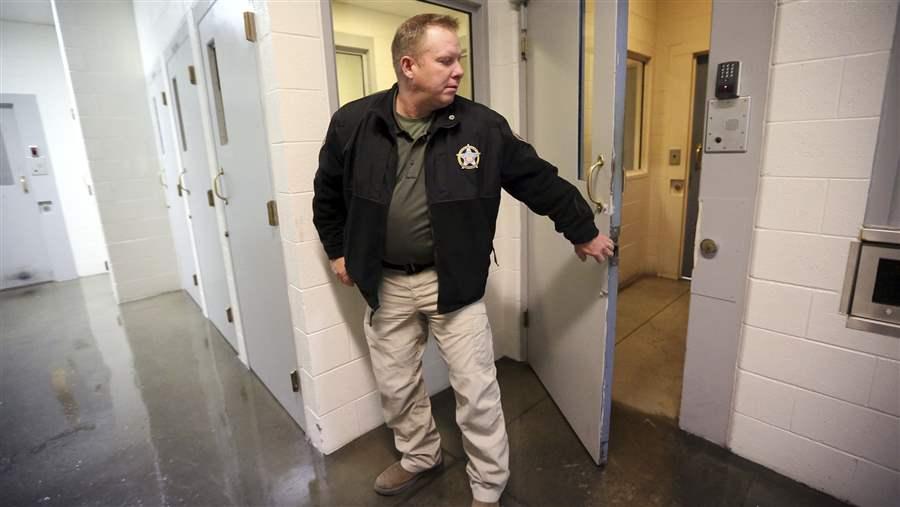Jails Play Key Role in Advancing County Health and Safety Goals
But with short stays and high turnover, continuity of care after release is crucial
Every year, millions of people are booked into U.S. jails. The jurisdiction holding them—usually a county—has a constitutional mandate to provide necessary health care while individuals are incarcerated. Yet to date, little has been known about how jails arrange this care.
According to new research from The Pew Charitable Trusts, jails fulfill this challenging obligation in a multitude of ways that reflect the diversity of counties in terms of size, resources, needs, and aims. They vary in the types of care offered, how it is paid for, and when it is routinely available, among other aspects. Understanding the range of practices and options available to jails as they design health care programs can help counties determine whether their programs can better meet their public health and safety needs.
According to Jonathan Thompson, the executive director of the National Sheriffs’ Association, treatment for mental illness is the most pressing issue facing sheriffs across the country. In fact, people in jail are more likely than the general population to have chronic and infectious diseases, mental illnesses, and substance use disorders. Short lengths of stay, ranging from a few hours to an average of 23 days, along with unpredictable releases and bookings, discourage development of care strategies for many people in jail or even the comprehensive screening such as might be required for accurately diagnosing a specific mental illness.
Connecting people leaving jails to available health or social services could improve health outcomes, decrease mortality rates, and save money. For example, recently released individuals with HIV who stay connected to primary care go to emergency departments less frequently than those without such a connection. They also exhibit a longer timespan between release from jail and their first emergency room visit. For individuals with behavioral health disorders, such connections could play a role in reducing recidivism rates and the overrepresentation of these individuals in correctional institutions. One financing vehicle for such services is Medicaid coverage, but another valuable resource is the Veterans Administration health system for those who qualify. As the country’s largest health care system it provides care to individuals in all 50 states and the District of Columbia, but can be especially useful for those not eligible for their state’s Medicaid program.
Jail health care is not just a criminal justice issue. Counties that invest effectively in jail health care can improve outcomes for their whole communities. After the San Francisco County jail introduced screening and treatment for chlamydia and gonorrhea, a nearby neighborhood clinic reported seeing fewer cases of these diseases among young women.
Despite the potential for care continuity services to further a broad range of county goals, from public health to public safety, it can be difficult for jails to offer them. Beyond the short stays, jails often lack the capacity to provide substantive programming. And even if they do offer such services, they need the cooperation and participation of health and social service organizations to which people leaving jails are likely to be referred.
Over the past few years, a range of initiatives have emerged as counties consider innovative approaches to running their jails, including diverting ill individuals from jail in favor of more appropriate treatment. The Stepping Up Initiative provides a forum for sharing best practices for reducing the number of people with mental illness in jails, while the MacArthur Foundation Safety and Justice Challenge provides funding to counties to help them develop and implement solutions to safely reduce their overall jail populations. The Data-Driven Justice Initiative brings communities together to identify the processes and policy frameworks needed to reduce the cycle of incarceration among individuals with complex health needs who repeatedly enter jails, emergency rooms, shelters, and other public systems.
Yet, when considering participation in any of these initiatives—or even concurrent with participating—policymakers can benefit from a better understanding of how specific jail health care and release programs are furthering public health and safety goals. And because jurisdictions are so varied, additional research is needed to understand which counties are achieving the greatest success at meeting these universal goals and how best to adapt their programs to meet localities’ needs and resources.
Maria Schiff is a senior officer and Frances McGaffey is a senior associate in The Pew Charitable Trusts’ project on states’ fiscal health.








